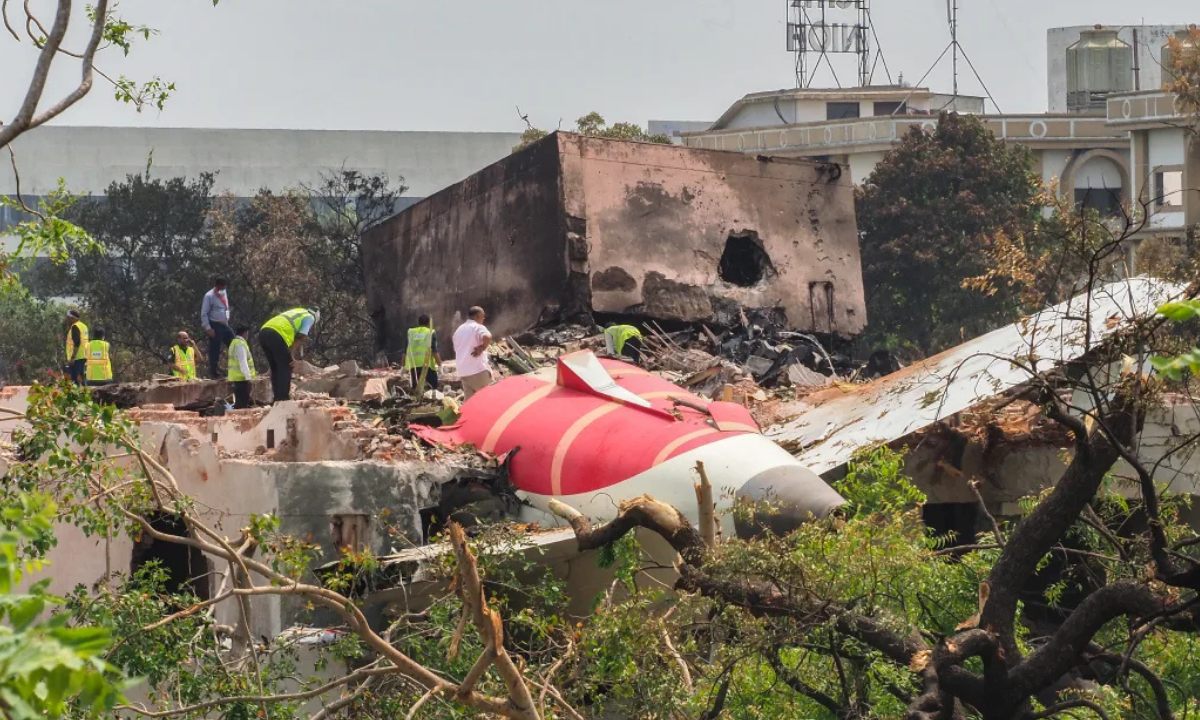Black Box Reveals Cause of Deadly Air India Boeing 787 Crash: Final Moments Captured in Detail
A preliminary report into the devastating crash of Air India Flight AI-171 has uncovered a chilling and preventable cause: a mechanical failure in the pilot’s seat that ultimately cost 270 lives.

Critical Error: Pilot Seat Malfunction During Takeoff
According to the official report, the disaster unfolded during takeoff when the locking mechanism of the pilot’s seat failed, causing the seat to suddenly slide backward. In a tragic reflex, the captain’s hands pulled the throttle levers into the “idle” position, drastically reducing engine thrust just seconds after liftoff.
The co-pilot immediately attempted to regain control, but the captain’s reclined position obstructed access to vital flight controls. Within seconds, the Boeing 787 lost lift and crashed into a nearby building housing medical workers.

Black Box Timeline: A Catastrophe in Seconds
Flight data and cockpit voice recordings provided a sobering sequence of events:
-
+12 seconds – Captain’s seat slides backward
-
+15 seconds – Co-pilot exclaims: “We’re losing thrust!”
-
+26 seconds – Aircraft enters stall at just 214 feet altitude
Despite attempts at recovery, the aircraft’s proximity to the ground and the blocked controls proved fatal.
Lack of Emergency Protocol and System Safeguards
Investigators also noted a critical absence of emergency commands such as “GO-AROUND” or “STAB TRIM”, standard in such situations. Additionally, the 787’s thrust levers lack safety systems like weight-based lockout or reverse-motion protection, exacerbating the crisis.
Regulatory Response and Manufacturer Action
The report triggered immediate global scrutiny.
-
The U.S. Federal Aviation Administration (FAA) and European Union Aviation Safety Agency (EASA) ordered urgent inspections of all Boeing 787 pilot seats.
-
Air India grounded 12 aircraft with similar maintenance histories.
-
Boeing has pledged a full redesign of the seat mechanism, with updates expected by 2026.
Casualties and Survivors
The final death toll stands at 270, including passengers, crew, and individuals in the hostel struck by the aircraft. The only survivor is a British national, currently receiving treatment.
The flight had 242 onboard:
-
169 Indian nationals
-
53 British nationals
-
7 Portuguese nationals
-
1 Canadian national
Over 40 people on the ground were also injured.
What’s Next: Final Report Due in July 2025
The full investigation report is expected in July 2025, but authorities have already vowed to reform inspection protocols and reinforce flight safety standards globally.
Conclusion: A Preventable Tragedy That Must Never Repeat
This crash serves as a haunting reminder of the importance of rigorous maintenance testing, functional safety systems, and redundancy protocols in aviation. The world watches closely as investigators continue their work — determined to ensure this never happens again.
